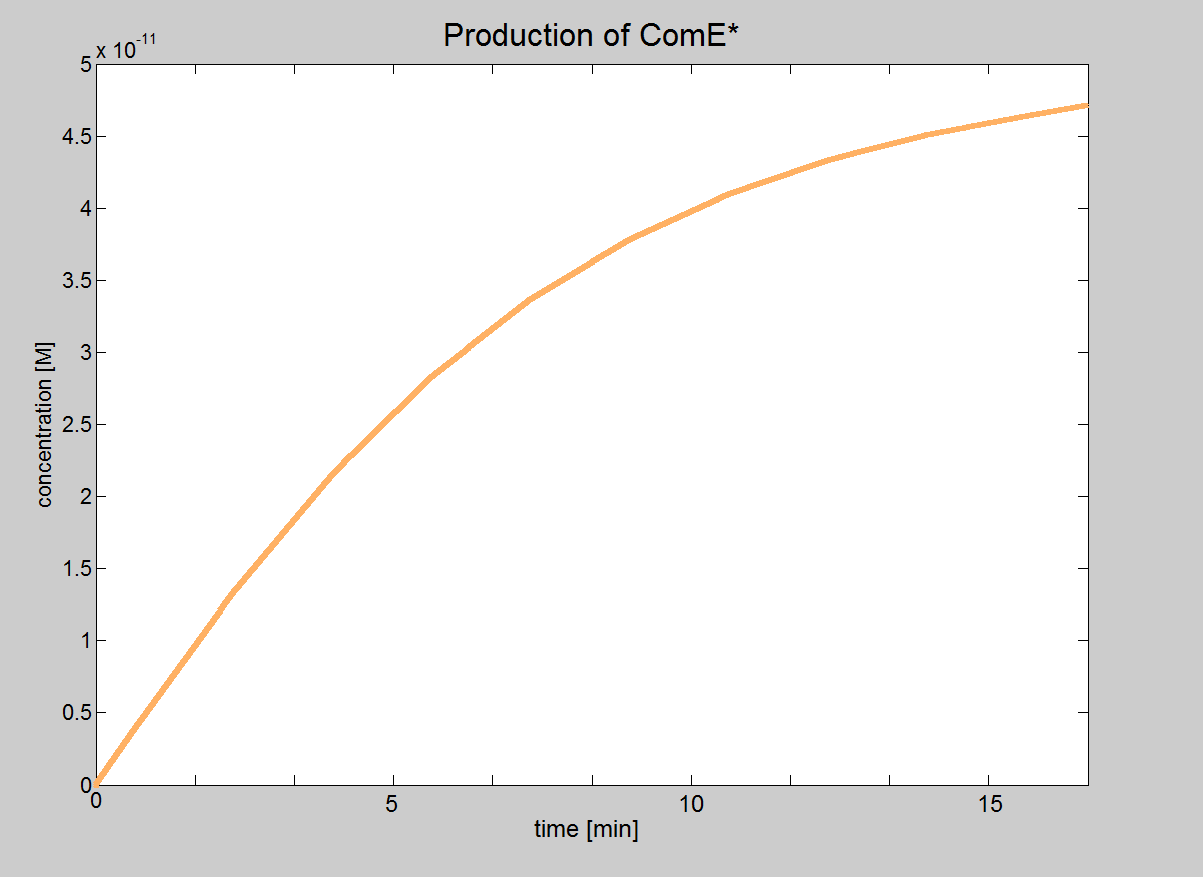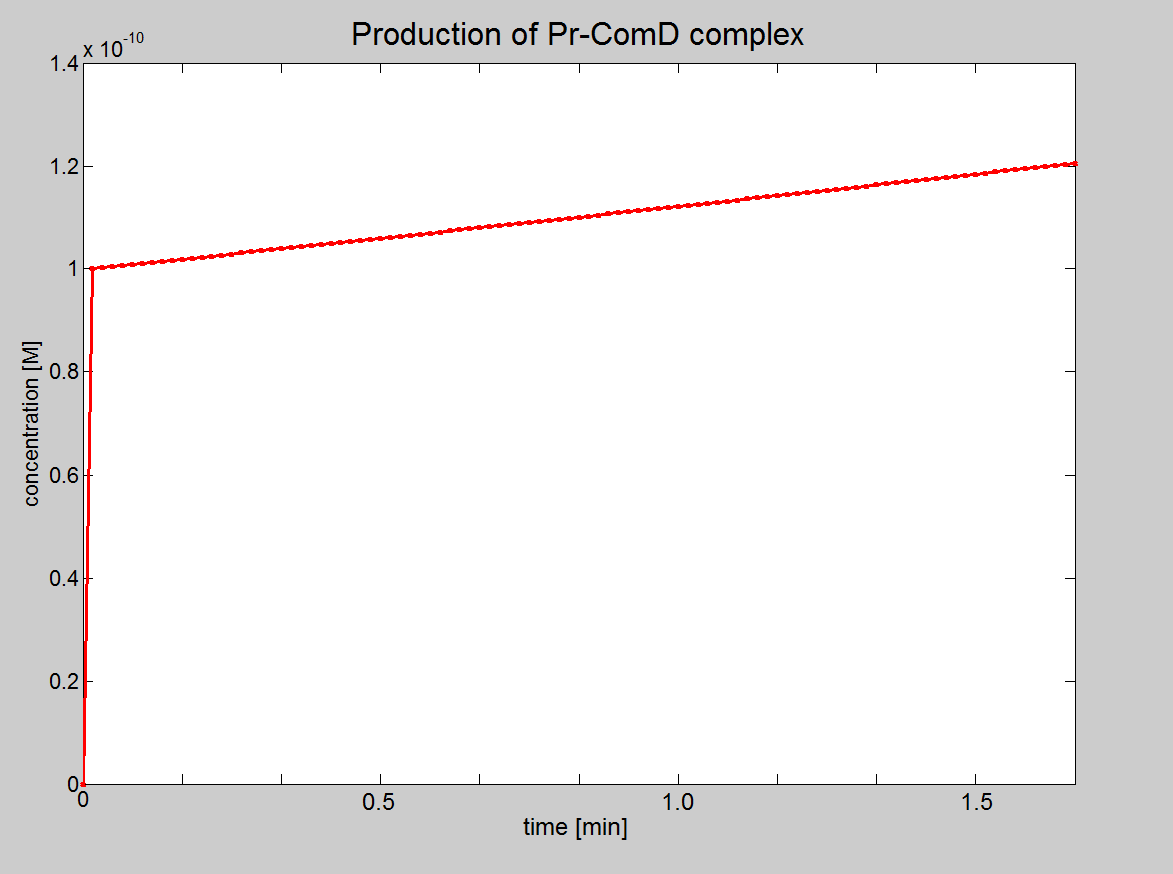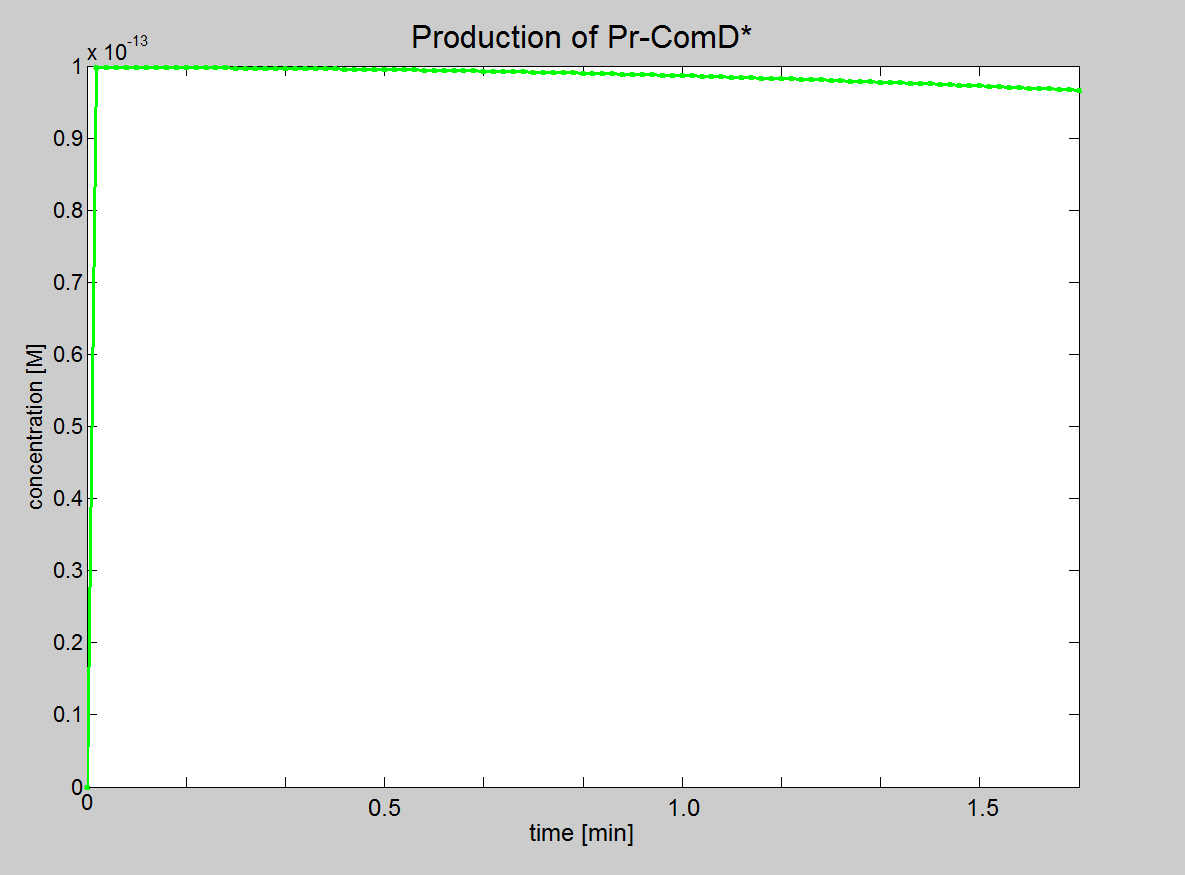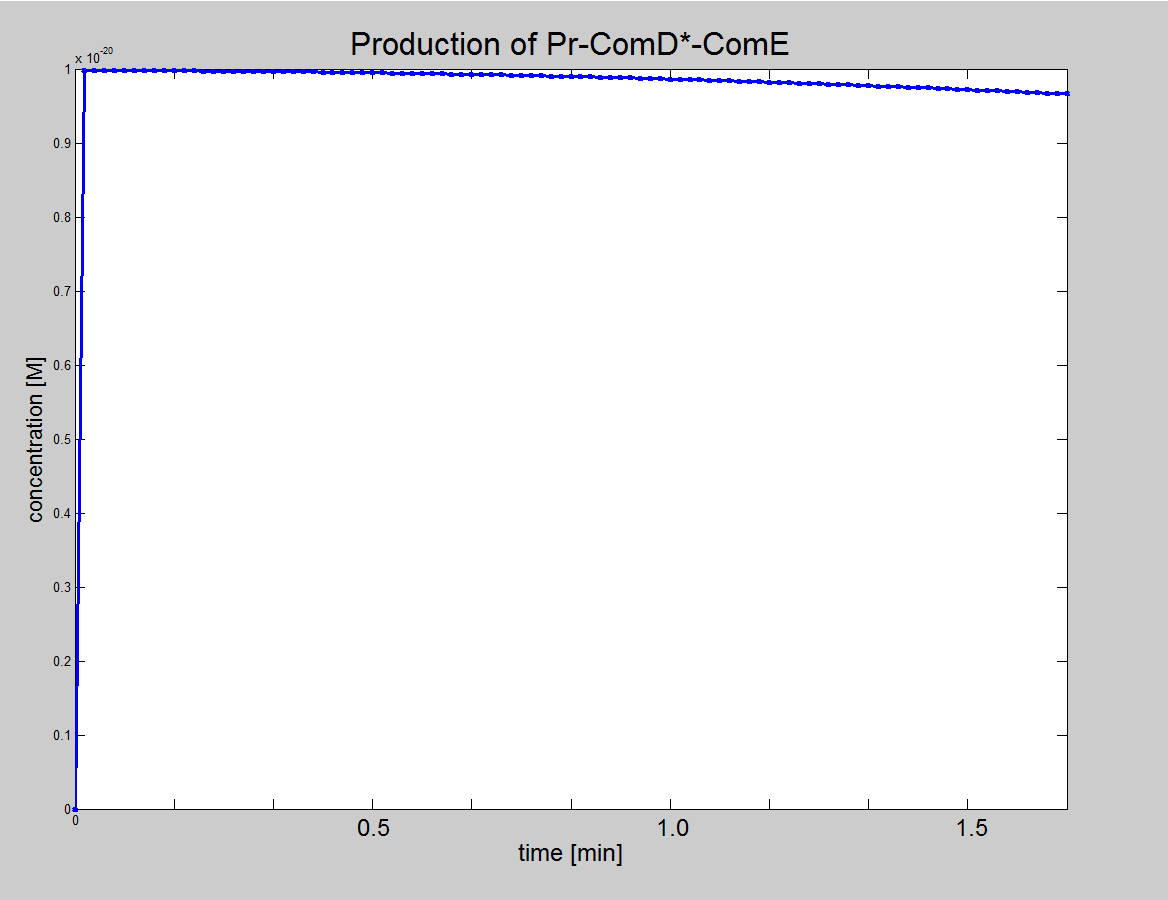Team:Imperial College London/Modelling/Signalling/Results and Conclusion
From 2010.igem.org
(Difference between revisions)
m |
m |
||
| Line 9: | Line 9: | ||
We are assuming an initial concentration of Phosphate and ComE of 100nM. | We are assuming an initial concentration of Phosphate and ComE of 100nM. | ||
If we change either [AIP]<html><sub>0</sub></html> or [ComE]<html><sub>0</sub></html>, then the final concentration of ComE* will always tend towards <html>5×10<sup>-11</sup>M</html>. <html>[ComE*]<sub>final</sub></html> will always tend towards this value, unless the initial concentrations of Phosphate and ComE are changed. However, if we increase both [AIP]<html><sub>0</sub></html> and [ComE]<html><sub>0</sub></html> at the same time, then [ComE*]<html><sub>final</sub></html> will be reached much faster (i.e. slope increases). | If we change either [AIP]<html><sub>0</sub></html> or [ComE]<html><sub>0</sub></html>, then the final concentration of ComE* will always tend towards <html>5×10<sup>-11</sup>M</html>. <html>[ComE*]<sub>final</sub></html> will always tend towards this value, unless the initial concentrations of Phosphate and ComE are changed. However, if we increase both [AIP]<html><sub>0</sub></html> and [ComE]<html><sub>0</sub></html> at the same time, then [ComE*]<html><sub>final</sub></html> will be reached much faster (i.e. slope increases). | ||
| + | |||
| + | '''Equation:''' Phosphate group on ComD binds to ComE and forms two products: phosphorylated ComE (ComE*) and AIP-ComD | ||
| + | |||
| + | AIP-ComD*-ComE ↔ AIP-ComD + ComE* | ||
<div ALIGN=CENTER> | <div ALIGN=CENTER> | ||
Revision as of 15:00, 27 October 2010
| Modelling | Overview | Detection Model | Signaling Model | Fast Response Model | Interactions |
| A major part of the project consisted of modelling each module. This enabled us to decide which ideas we should implement. Look at the Fast Response page for a great example of how modelling has made a major impact on our design! | |
| Objectives | Description | Results | Constants | MATLAB Code |
| Results and Conclusion |
| Using this model, we can show that the phosphorylated ComE* is proportional to both initial concentration of AIP and ComD.
If the initial concentration of AIP or ComD is zero, there is no formation of ComE*. We are assuming an initial concentration of Phosphate and ComE of 100nM. If we change either [AIP]0 or [ComE]0, then the final concentration of ComE* will always tend towards 5×10-11M. [ComE*]final will always tend towards this value, unless the initial concentrations of Phosphate and ComE are changed. However, if we increase both [AIP]0 and [ComE]0 at the same time, then [ComE*]final will be reached much faster (i.e. slope increases). Equation: Phosphate group on ComD binds to ComE and forms two products: phosphorylated ComE (ComE*) and AIP-ComD AIP-ComD*-ComE ↔ AIP-ComD + ComE*
|
 "
"







